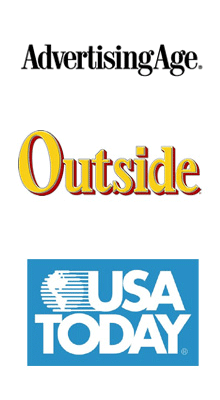Just the facts – A great post from our often quoted friends at the Center for Media Research, facts you can use during your reports, speeches and water-cooler arguments during 2010. Ah, we love stats.
Mobile Phones
- U.S. mobile phone users 13+: 223M
- Number of mobile Web users: 60.7M (up 33% from 2008)
- Percentage of mobile devices that are smartphones: 18% (up from 13% in 2008)
- Percentage of mobile device owners that streamed audio: 8%
- Percentage of mobile device owners that viewed video via their mobile phone: 7%
- Percentage of mobile devices sold in Q3 2009 that were smartphones: 25% (estimated 40%-50 in 2010)
Source: The Nielsen Company, November 2009
Looking Ahead To Mid-2011
- Estimated smartphone user base: 150M
- Estimated mobile subscribers: 300M+
- Estimated users of mobile web: 120M
- Estimated users watching mobile video: 90M
Source: The Nielsen Company, November 2009
Growth of cellphone only homes in the U.S.
- 2009… 21%
- 2008… 18%
- 2007… 15%
Top 5 Smartphones (% Ownership)
- Blackberry 8300 Curve: 17%
- Apple iPhone 3G: 15%
- Apple iPhone 3G S: 12%
- Blackberry 9530 Storm: 6%
- Blackberry 8100 Pearl: 5%
Source: The Nielsen Company, November 2009
Top 5 Mobile Web Sites
- Google Search
- Yahoo! Mail
- Gmail
- Weather Channel
Top Social Networks on Mobile Phones
- MySpace
Top 5 Mobile Video Channels
- YouTube
- Fox Interactive Media
- Weather Channel
- Comedy Central
- CBS
Internet
- 195M Active U.S. Internet users
- 160.3M People who accessed the Internet via a broadband connection: (93.3%… up 16% from 2008)
- 138.4M Unique viewers of video (up 11.4% from 2008)
- 11.2B Total online video streams viewed monthly (up 17% from 2008)
- 200.1 minutes Average time spent viewing online video per viewer monthly (up 12.5% from 2008)
Social Networking
- Facebook reaches 56% of the active U.S. Internet universe with an average usage of 6 hrs a month per user
- Facebook is the #3 site visited by users 65 and older
- Twitter grew 500% year-over-year
- Time spent on social networking sites in the U.S. increased 277%
- The average U.S. worker spends 5 hrs a month visiting social networks at the office
- 32% of all mobile web users visited a social network
Why Does Google Search Love Examiner.com? – While catching up on our holiday reading and writing, we came across an interesting post from Time.com on Examiner.com. If you are not familiar with Examiner, the story does an adequate job of describing the quasi-organized blogger mash-up. While the story about the Examiner is interesting enough, we wanted to highlight three points from the article.
- Content is still King, at least to Google. I cannot remember a more simplistic, yet true statement about how good SEO is focused around good…not original…content:
“…by stocking the lake with so many fish every day, Examiner.com increases the chances that Google trawlers will haul one of theirs up.”
- Pro-Am content is a good middle ground. We have talked at length about the swing from professional content (Frommer’s) to amateur content (TripAdvisor)…is Examiner.com a look at the content future? Too soon to tell, but we like this direction and not either extreme.
- Don’t overlook the little guys. If you have never heard of Examiner.com prior to this article, you might want to broaden your SEO strategy. Sure, TripAdvisor is still the biggest fish in this sea of nameless reviews and links, but sites such as Examiner.com can offer an equally powerful SEO boost with a lot less editorial pitching.


















